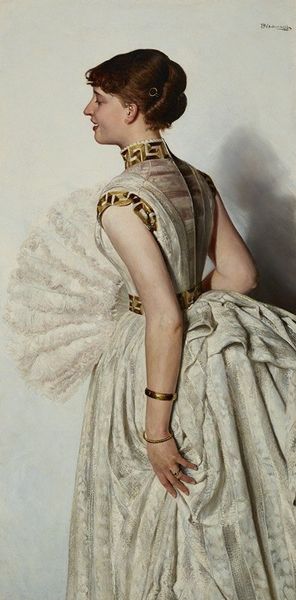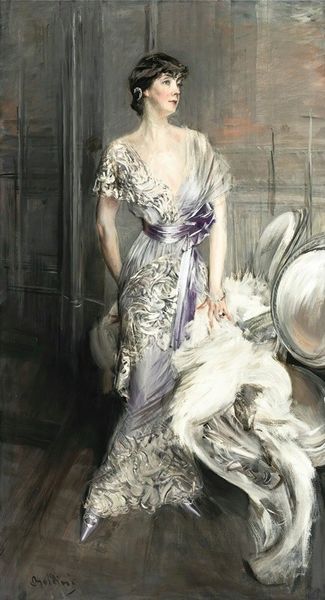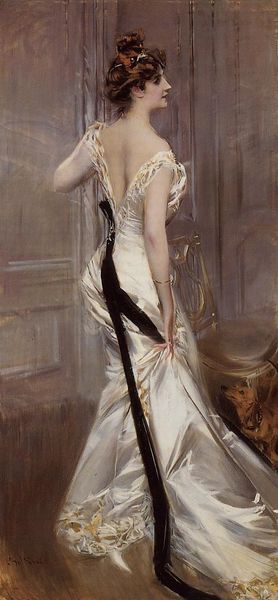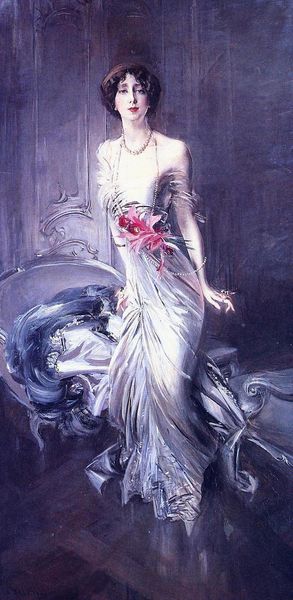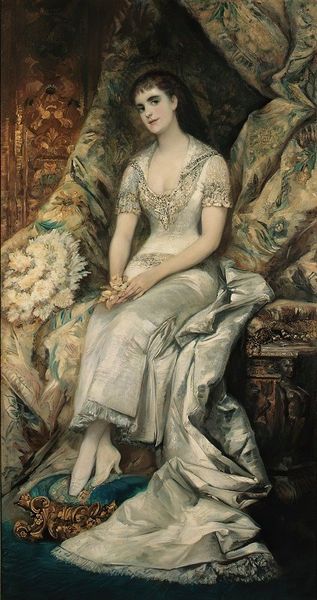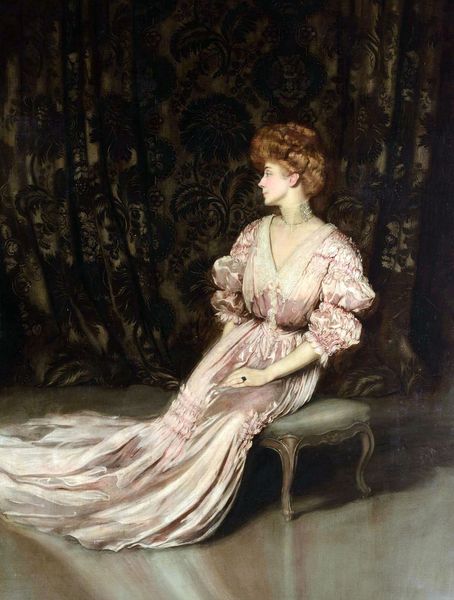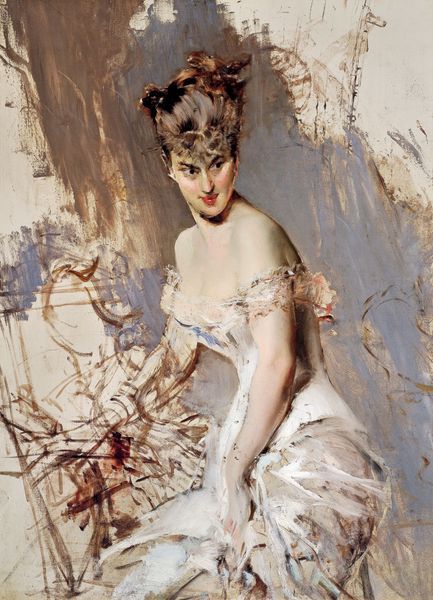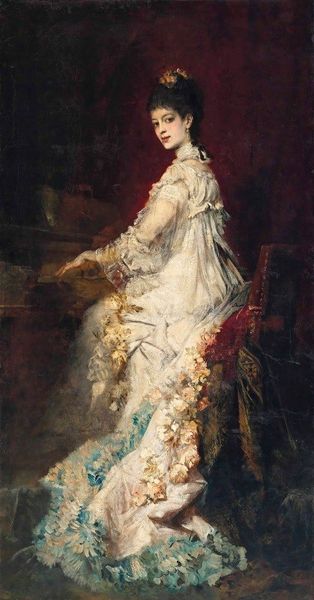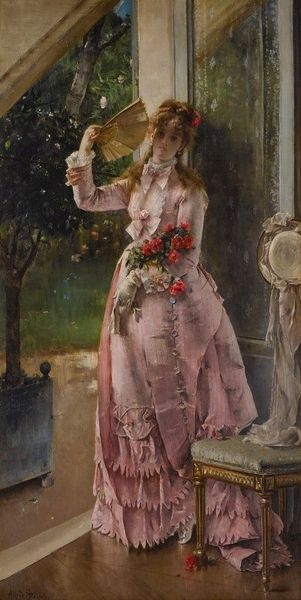
Copyright: Public Domain: Artvee
Editor: This is Georges Clairin’s "Frou Frou," created around 1882, seemingly in oil paint. The texture of her dress really stands out. How do you interpret the work's composition? Curator: The composition presents a fascinating study in contrasts. Observe how Clairin uses a primarily muted palette, dominated by creams and grays. What effect do you think that palette has on the texture he’s created? Editor: It emphasizes it, I think. All of those layers look so detailed with the simple coloring. But that also means that when you do get color – like her bright lips or the little ornament at her collar – they pop even more. Curator: Precisely. Also note the positioning of the figure, slightly off-center. What effect do you believe the artist intended by placing her in the setting in that way? Editor: The setting feels…secondary. But I think if she was in the very center it might feel too posed or symmetrical? Like he wants her to look candid. Curator: A fine observation! Notice how her gaze does not meet ours; she's slightly detached, lost in her thoughts, no? That, combined with her elegant attire, creates a sense of restrained drama. There is also, one must note, a stark interplay between sharp, vertical lines - the wall paneling and walking stick - and her softer, rounded form. Does this contrast suggest anything to you? Editor: Hmmm… Maybe a tension between formality and the subject's actual feelings? Thanks for that point of view. It encourages me to examine the details and form deeper rather than rush into broad statements about narrative. Curator: Indeed. A work of art always benefits from rigorous, iterative scrutiny.
Comments
No comments
Be the first to comment and join the conversation on the ultimate creative platform.
